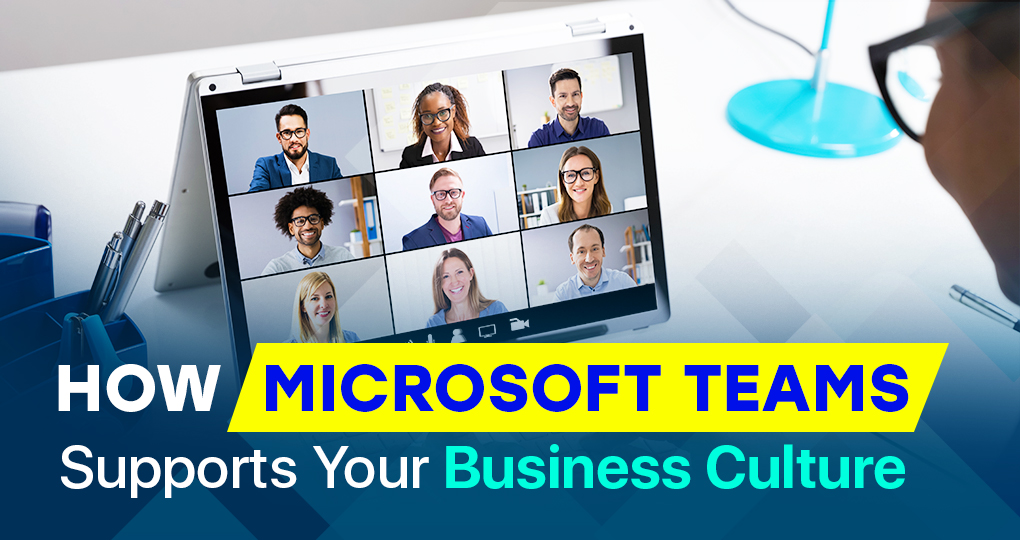Need help enhancing your staff members’ productivity, job satisfaction and general engagement at work? Try these Microsoft Teams apps.
Microsoft Teams is an increasingly popular collaboration tool that can help improve staff engagement and satisfaction. It allows teams to communicate, collaborate, and manage projects all in one place.
While Microsoft Teams’ range of standard features is extremely useful in the workplace, they’re not the only tools you should be using. Did you know that Microsoft Teams offer a range of add-on apps as well?
These apps, when properly selected, deployed, and managed, can do a lot to enhance your company culture. All of this has to do with your staff’s engagement in their work…

Why Do You Need To Support Employee Engagement?
Employee engagement, or the level of involvement and enthusiasm an employee has in their job, is a key factor in any successful business. A strong engagement strategy will result in employees that feel valued, respected, and motivated to do their best work.
It is well-documented that engagement levels directly affect productivity and quality. Studies have shown that engagement leads to higher job satisfaction, improved morale, and better customer service. Companies with higher engagement levels are more likely to be profitable, attract and retain top talent, reduce staff turnover rates and create a positive work environment.
Engagement goes beyond simply providing good working conditions; it’s about creating an atmosphere where employees want to come to work every day. This involves cultivating a sense of purpose in every worker by connecting them with the company mission statement as well as maintaining open communication between management and employees. When staff members understand how their role fits into the bigger picture, they tend to become more invested in their tasks which leads to higher engagement levels.
In addition to this, businesses should provide opportunities for professional growth through ongoing training programs or workshops that teach new skills and help staff develop within their roles while providing increased job satisfaction. Recognizing employee achievements through public commendations or rewards can also help boost engagement levels as it creates a feeling of accomplishment while motivating others at the same time.
Finally, fostering a culture of fun within the workplace can be beneficial for engagement levels by boosting morale and improving job satisfaction among staff members. Organizing team building activities or special company events can go a long way in helping create a positive atmosphere for everyone involved; giving people something enjoyable to look forward to on top of just their everyday tasks will help them become more vested in their role at the company overall.
All these combined strategies contribute towards creating an engaged workforce capable of delivering outstanding results for both customers and employers alike; ultimately making employee engagement one of the most important components of any business’ success today.
3 Ways Microsoft Teams Supports Your Business Culture
Gauge Team Engagement
The first step in enhancing engagement is understanding the current state of your company culture. You can’t expect to make any progress if you don’t know where you’re starting from.
Microsoft Teams add-on apps like SurveyMonkey, Betterworks, and Insight HR can help you keep track of employees’ engagement, demeanor, and priorities. You can create surveys to gauge how your team is doing, track progress of key tasks, and better inform your check-in meetings and performance reviews.
Engaging with staff members and ensuring they are enjoying their work is an important part of any successful company culture. It is important to check in with staff members periodically, whether it be through surveys, meetings, or other forms of engagement. By checking in with employees, managers can gain a better understanding of how individual team members are feeling about their jobs and the company culture as a whole.
When asking staff about their job satisfaction, employers should provide multiple ways for employees to express themselves in order to get the most accurate feedback. This could include multiple-choice surveys or open-ended questions that allow employees to provide detailed answers.
Additionally, employers should use engagement techniques that are tailored to each employee’s needs; for example, some may prefer face-to-face meetings while others may prefer online engagement such as polls or video conferences.
Regular engagement and assessment of job satisfaction levels is essential in making sure that employees feel valued and appreciated by the organization. Doing this can help create an environment where employees feel empowered to do their best work and reach their full potential. Furthermore, it helps ensure that teams remain productive and motivated since team members who feel satisfied and engaged with their work tend to be more productive than those who don’t.
Foster Social Engagement
Even if part of your team is working remotely, you can still maintain the social aspect of your work environment by encouraging them to post status updates and share their insights with Microsoft Teams add-on apps like AgilePolly, Decisions, and ScrumGenius.
Employee engagement and job satisfaction are key components of successful company culture. But it is not enough for employees to be engaged in their work—they must also feel connected to each other. Socializing with coworkers fosters a sense of camaraderie and belonging, which can lead to higher engagement, loyalty, and productivity from staff.
It has been proven that when people make meaningful connections with those around them at work, they are more likely to stay in their job for longer periods of time. When employees feel like they fit into the culture of an organization, they will be more likely to continue contributing engagement and enthusiasm to their roles. This can ultimately result in lower turnover rates, better performance outcomes, and greater collaboration among staff members.
Socializing is also important because it can help boost morale. When colleagues get together outside of the office environment, they have an opportunity to relax and bond over shared interests or experiences. It gives them a chance to see each other as real people rather than just co-workers—fostering relationships that can last long after any one particular project is finished or a team member has moved on.
Facilitate Creative Brainstorming Sessions
You can gather ideas from your team in free-form digital spaces and on virtual whiteboards with apps like Freehand, Miro, and MURAL.
Digital whiteboard apps provide an invaluable tool to support staff engagement, collaboration, and creativity. By providing employees with a virtual platform to hold brainstorming sessions, companies can benefit from the engagement and creativity of their team members. Brainstorming sessions held in digital whiteboards can be conducted from any device, allowing for remote engagement and collaboration.
Using digital whiteboards for brainstorming provides an effective way for teams to generate ideas quickly, whilst being able to easily store them for future reference. Having the ability to save these sessions digitally also makes it easier for those who weren’t present at a meeting to refer back to the notes taken during the session.
Digital whiteboards are also visually engaging due to the ability to draw or write on the board, along with supporting images, controlling audio presentations and even providing live chat functions that enable engagement with multiple parties in real time.
The benefits of using digital whiteboards go beyond just engagement and collaboration; they can have a positive effect on company culture too. For example, by having a virtual platform where everyone can come together in one place regardless of location or time zone, it allows people to feel connected which strengthens team spirit and corporate identity.
This then leads to encouraging job satisfaction as staff feel like their opinions are valued and listened to, making them aware that their contributions are appreciated within their organization. In fact, the Freehand by Invision app is now fully integrated, allowing users to use a virtual whiteboard for note-taking and brainstorming during Microsoft Teams meetings.
Don’t Let Your Staff Become Disengaged At Work
Engagement is one of the most critical components of your company culture. Make sure you fully harness the tools available to you to help with the process.
Need expert assistance? Our team has extensive experience with Microsoft Teams and can ensure you optimize the way you use it at your business. Book a meeting with us to get started.
















